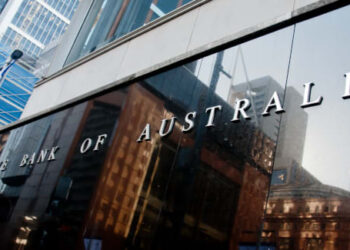John Lonsdale, chair of the Australian Prudential Regulation Authority (APRA), has reaffirmed the stability of the Australian banking system amid continued volatility in the United States and Europe.
He told the Senate standing committee on economics that the financial system “remains very strong, very stable, and very resilient”.
However, the APRA chair acknowledged stability risks, flagging “lessons and linkages” from the fallout surrounding the collapse of three US banks — Silicon Valley Bank (SVB), Signature Bank, and First Republic Bank — and the demise of Swiss lender Credit Suisse.
Among these risks, he said, is the stability of wholesale funding markets, noting the exposure of Australia’s major banks.
“Where there’s fragility in those markets — not caused by Australia but caused by other events — means there are some issues, I think, to be aware of, and we pay very close attention to it and certainly the banks do as well,” he said on Wednesday (31 May).
When reflecting on lessons learned from banking stability in the US and Europe, he expressed concern over the speed in which depositors withdrew funds from the failed banks at the height of the crisis.
“In the case of SVB, a third of the deposits left in a matter of hours in the UK subsidiary. So that’s very, very fast,” he said.
Another key concern, he added, is the treatment of additional tier 1 (AT1) bonds, or “hybrid bonds”, higher yield bank instruments with no maturity date.
This issue, he said, surfaced following the decision by the Swiss Financial Market Supervisory Authority (FINMA) to write off CHF 16 billion (AU$25.6 billion) AT1 capital notes issued by Credit Suisse.
The move was designed to ensure local competitor UBS would have enough capital to secure its AU$4.8 billion acquisition of Credit Suisse, helping to fund costs associated with the takeover.
But the move rattled markets, casting doubt over the security of AT1 investments.
Mr Lonsdale noted the move broke convention, with shareholders typically carrying the cost of a bank failure.
“Usually, you would see shareholders actually be the ultimate carriers of the loss where an entity is in trouble,” he said.
“Now, in Credit Suisse’s case, the AT1 holders bore quite a lot of that burden.
The APRA chair said developments in Switzerland warranted a review of the “hierarchy” of risk associated with the collapse of a publicly listed institution.
He said this was particularly important in Australia, given retail investors have higher relative exposure to AT1 bonds.
“That is an interesting issue that we need to think about, as well as the guarantees that were applied by governments globally,” Mr Lonsdale observed.
Amy Xie Patrick, head of income strategies at Pendal Group, was among a number of observers to flag such risks upon the initial news of the bond wipeout in Switzerland.
The Pendal analyst said the Credit Suisse write-off should serve as a warning for Australian bondholders.
“…The wiping-out of Credit Suisse AT1 bondholders will be a wake-up call for parallel assets in Australia,” she said.
“In coming days, the market will be rightly asking whether the risks have been adequately priced in to domestic subordinated bank bonds.
“Is the market making the right assumptions about call dates and maturity dates? Do hybrids pay enough extra coupon for the risk that those coupons might be switched off? Are there ways to construct portfolios that offer better sleep at night?”
Given the higher stake, Ms Xie Patrick said she expects Australian investors are likely to demand higher returns for future hybrid bond exchanges.
The European Central Bank (ECB) criticised the Credit Suisse write-off in a joint statement alongside the Single Resolution Board (SRB), and the European Banking Authority (EBA).
Pointing to reforms recommended by the Financial Stability Board following the GFC, the European regulators stressed common equity instruments should be the first to absorb the losses of a troubled banking institution, before considerations of a wipeout of AT1 capital notes.







